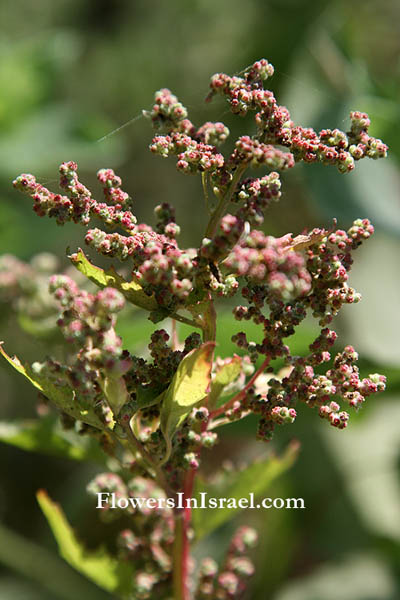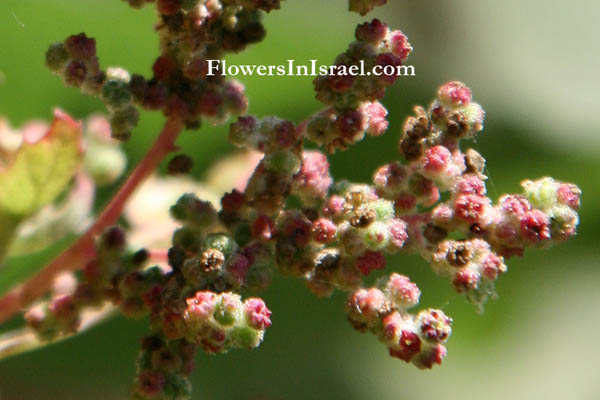כף-אווז אדומה
| Scientific name: | Chenopodium rubrum L. | |
| Common name: | Red Goosefoot | |
| Hebrew name: | כף-אווז אדומה | |
| Arabic name: | السرمق الأحمر | |
| Plant Family: | Chenopodiaceae, סלקיים |

|
| Life form: | Annual | |
| Stems: | Erect to ascending or prostrate, much-branched, 15-60 cm, glabrous | |
| Leaves: | Alternate, entire, dissected, dentate or serrate | |
| Flowers: | Green | |
| Fruits / pods: | Seeds vertical and occasionally horizontal, ovoid, 0.6-1 mm diam., margins rounded; seed coat reddish brown | |
| Flowering Period: | March, April, May | |
| Habitat: | Disturbed habitats | |
| Distribution: | Mediterranean Woodlands and Shrublands | |
| Chorotype: | Pluriregional; boreal-tropical | |
| Summer shedding: | Ephemeral |

Derivation of the botanical name: Chenopodium, from Greek chen, "goose," and pous, "foot," or podion, "a little foot," referring to the shape of the leaves in some species. rubrum, red, ruddy
|